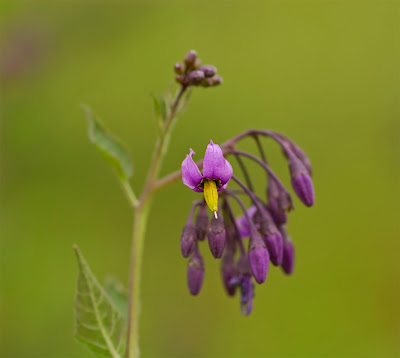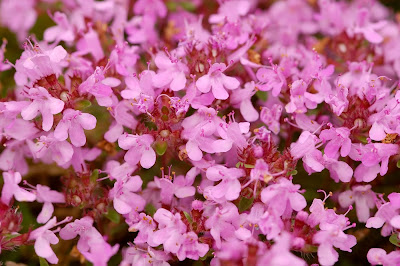 |
| Bittersweet (Solanum dulcamara) |
Bittersweet (also known as Woody Nightshade) was growing through a hedge at the side of Beeches Road (field boundary near crossroads).
Bittersweet is a close relative of Potato, Tomato and Aubergine (all these plants belong to the genus Solanum and all have poisonous foliage). Unlike its partially edible relations: all parts of Bittersweet (including the attractive fruits) contain the glycoalkaloid poison solanine and cause nausea and stomach cramps if consumed.
I found 3 Six-spot Burnet moths in the rough grassland above Little Round Top Wood, they all looked a bit worn (probably the end of their flight period).
These day-flying moths produce cyanogenic glucosides and can also sequester those produced by their foodplant (Common Bird's-foot Trefoil). When broken down, the cyanogenic glucosides release poisonous hydrogen cyanide: their crimson-spotted wings are an aposematic warning to predators.
 |
| Six-spot Burnet (Zygaena filipendulae) |
 |
| Hairy Thyme (Thymus praecox) |
Surprisingly few bees around at the moment - I've scarcely seen any this summer, even the dense clumps of thyme were empty.
At the Test I found a Sparrowhawk kill: a clump of feathers which probably belonged to a Meadow Pipit.
I also found this large female Drinker moth:
 |
| Drinker moth (Euthrix potatoria) female |
 |
| Drinker moth (Euthrix potatoria) female |
 |
| Drinker moth (Euthrix potatoria) female, laying eggs |
 |
| Drinker moth (Euthrix potatoria) female, laying eggs |
Difficult to photograph due to the blustery wind!
The irritatingly hairy caterpillars of this moth feed on wild grasses and reeds: these eggs will hatch in a month's time and the larvae will spend the winter in their larval stage (pupating the following summer).
In the sheep-grazed grassland south of the Test, I found the diminutive white flowers of Fairy Flax (Linum catharticum): a non-edible, wild relative of Flax (the plant from which linseed is obtained).
 |
| Fairy Flax (Linum catharticum) |




No comments:
Post a Comment